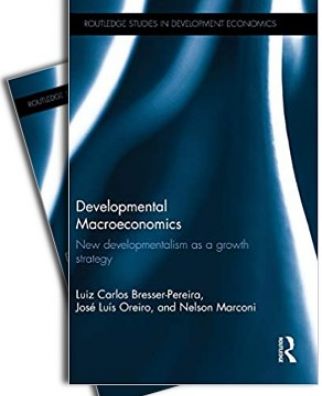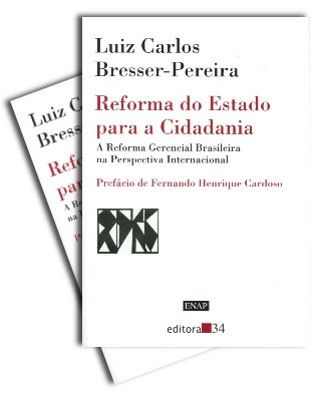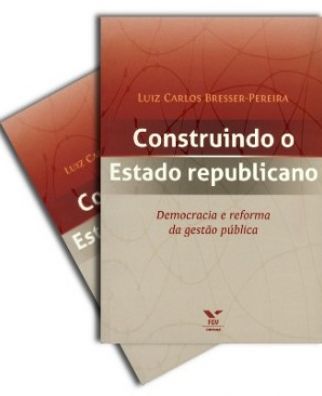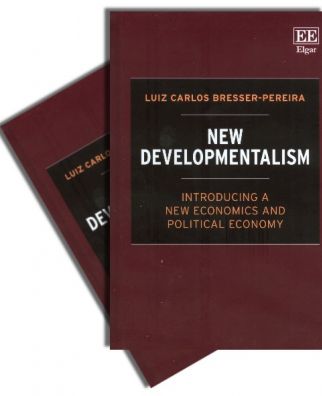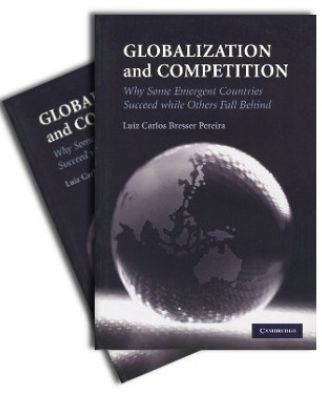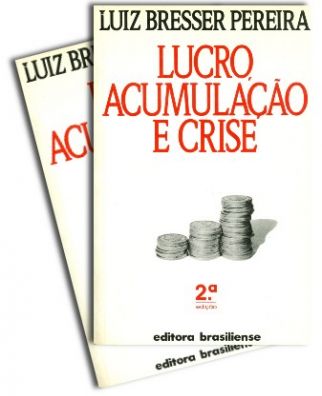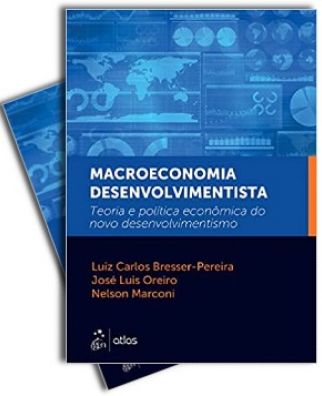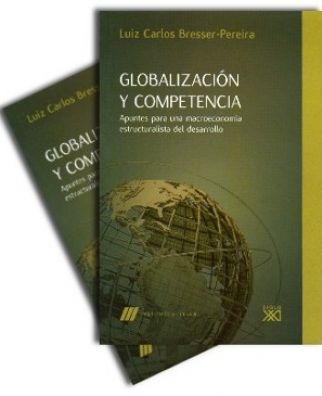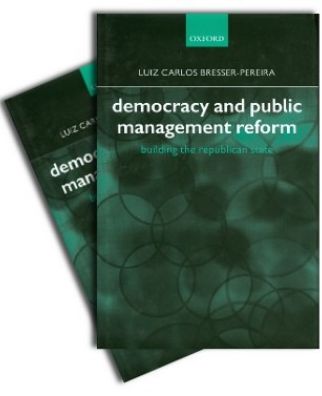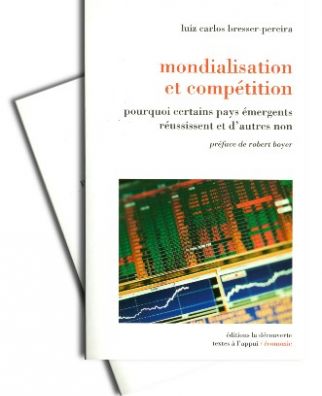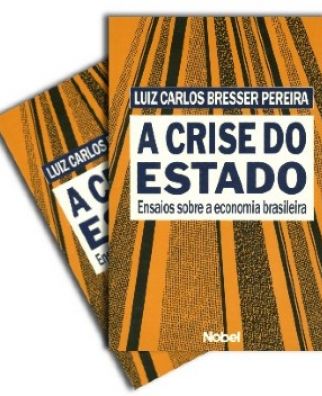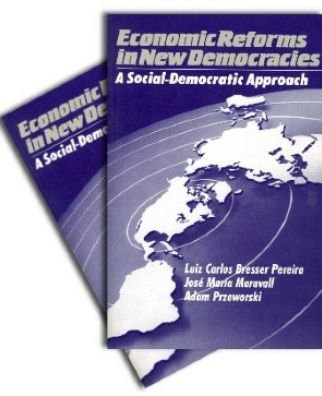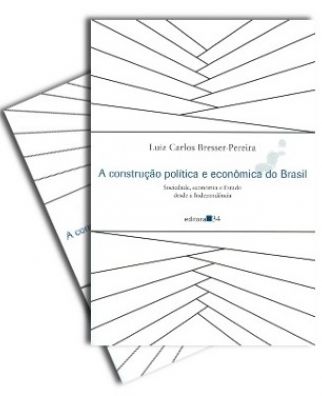2009. The present crisis is also a moral crisis. It is a consequence of the neoliberal ideology and of the orthodox economic theory. Both teach the "invisible hand" thesis and reject the existence of the public interest. (Article: O Estado de S.Paulo)
BRAZILIAN ECONOMY
ALL TEXTS ON BRAZILIAN ECONOMY
2008. Se os bancos continuarem a ser socorridos sem serem nacionalizados, não haverá a reestruturação necessária (Article: Folha de S.Paulo).
2008. As the market resolved the exchange rate overvaluation and the reduction of the interest rate may be done without risking inflation, Brazil faces a golden opportunityto escape from its monetary trap.(Article: Folha de S.Paulo).
2008. A agência que substituir o FMI deverá alertar os países que ultrapassarem o limite de déficit em conta corrente (Article: Folha de S.Paulo).
2008. In order to transform the "pre-sal" in wealth, not in a curse, it will be necessary to neutralize the embodied Dutch disease. (Debate: Folha de S.Paulo).
2008. With Nelson Marconi. In Brazil the Dutch disease is not as serious as in oil countries, but it is sufficiently serious to cause gradual deindustrialization. Paper in edited book. (Paper in Doença Holandesa e Indústria)
2008. Lula's new industrial policy is welcomed, but it dos not replace a non-competitive exchange rate.(Article: Folha de S.Paulo)
2009. With Cleomar Gomes. The paper claimsthat inflation targeting policy was adopted in Brazil before the interest rate trap was faced and solved. This was a mistake because inflation targeting is good to manage monetary policy, not to change the monetary regime as it was in 1999 and still is necessary in Brazil. (Paper in edited book). English version available.
2008. It seems that Lula is understanding that the present exchange rate represents a real danger for the country. (Article: Folha de S.Paulo)
2008. Only the control of capital inflows will make the exchange rate again competitive. (Interview to Luciana Xavier, O Estado de S.Paulo)
2008. The manufacturing industry is growing while it is prematurely desindustrializing due to moderate but not neutralized Dutch disease. (Article: Folha de S.Paulo).
2008. With Eli Diniz. Brazilian industrial entrepreneurs associated with the state bureaucracy were dominant from 1930 to late 1980s. Now, they may be returning to power. At least they are better prepared for that. (Paper to be published)
2008. The present financial crisis is probably the worst since 1929 because it adds a banking crisis to a long term current account deficit in the US that reduced trust in the dollar. (Article: Folha de S.Paulo 11.2.08).
2007. The Brazilian state bureaucracy was part of the ruling class in association with the industrial bourgeoisie between the 1930s and the 1980s. English version available. (Paper: Revista de Sociologia e Política (Univ.Paraná).
2007. It is possible and desirable to have a national agreement assuring a more competitive exchange rate. (Article: Folha de S.Paulo).
2007. IMF and World Bank are dead institutions. The former engaged in the growth cum foreign savings policy the later, with neo-liberal reforms. Both represent the interest of the rich countries. (Article: Folha de S.Paulo)
2007. Brazilian society underwent two cycles in the twentieth century, followed, with a gap, by the respective political coalition. Between the beginning of the century and 1964, the first society cycle, "Nação e Desenvolvimento", corresponded at state level by the National-Developmentalist political pact (1930-1984). The second , "Democracia e Justiça Social", begins in the late 1960s and gets exhausted in middle 2000s. It correspond to two political coalitions: first, between 1977 and 1987, the 1977 Popular-Democratic Pact, that achieves democratic transition and political power in 1985 but collapses two years later it follows a political vacuum and, from 1991 to the present, we have the Liberal-Dependent Pact precariously combined with the democratic and social ideas - and no real economic development. (Section of the book Macroeconomia da Estagnação)
2009. An encompassing analysis of the Brazilian macroeconomic system; a first attempt to build new-developmental macroeconomics. (This book is an atualized version of Macroeconomia da Estagnação). Available in bookstores
2007. An encompassing analysis of the Brazilian macroeconomic system. A first presentation of the developmental macroeconomics. Why Brazil failed to grow fast after the Real Plan. (Book: Editora 34) Out of print; availble in this site. English version available: Developing Brazil (2009).
2007. The August 2007 financial crisis marks the end of the extraordinary growth cycle that the world economy experienced in the last five years.(Article: Folha de S.Paulo).


